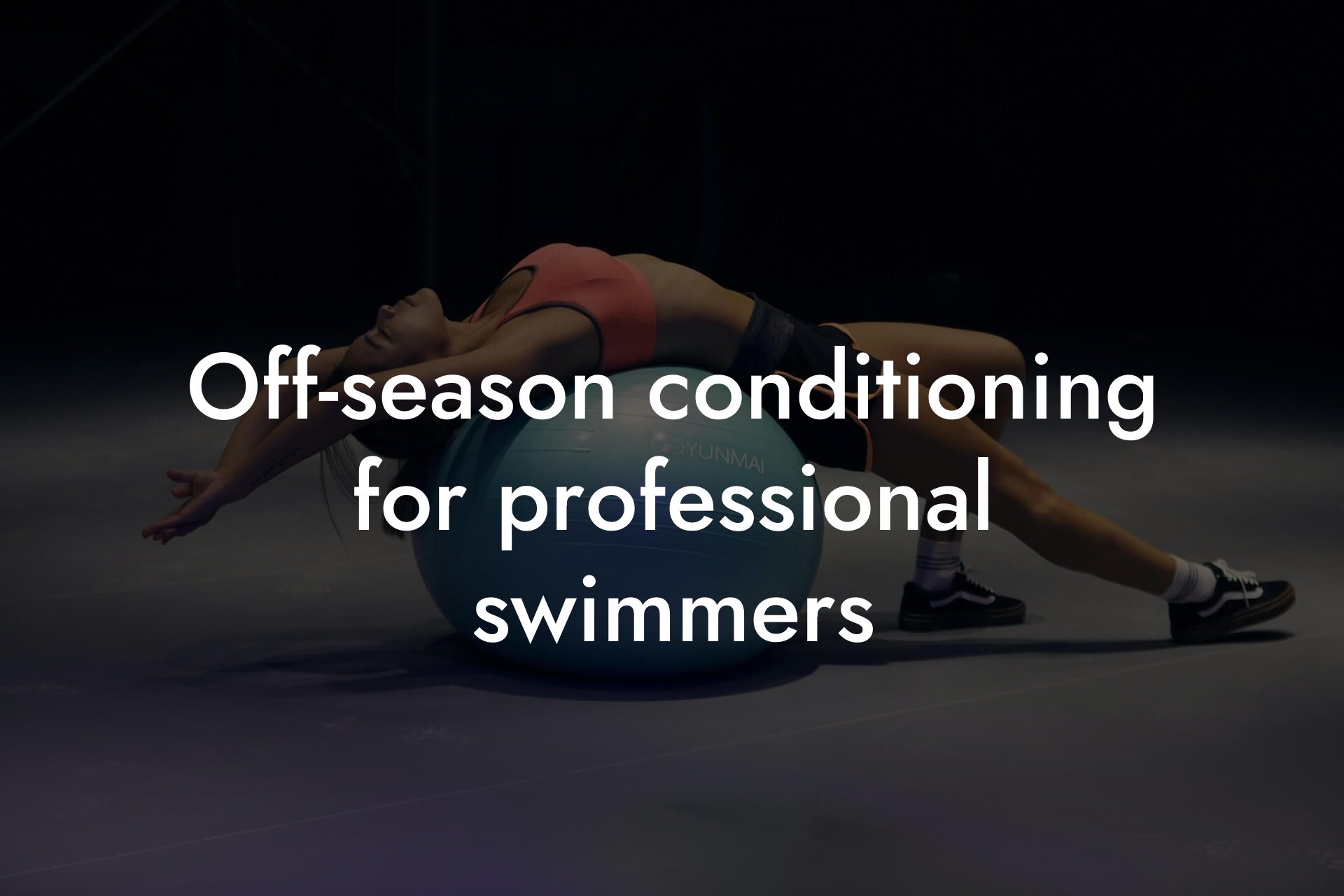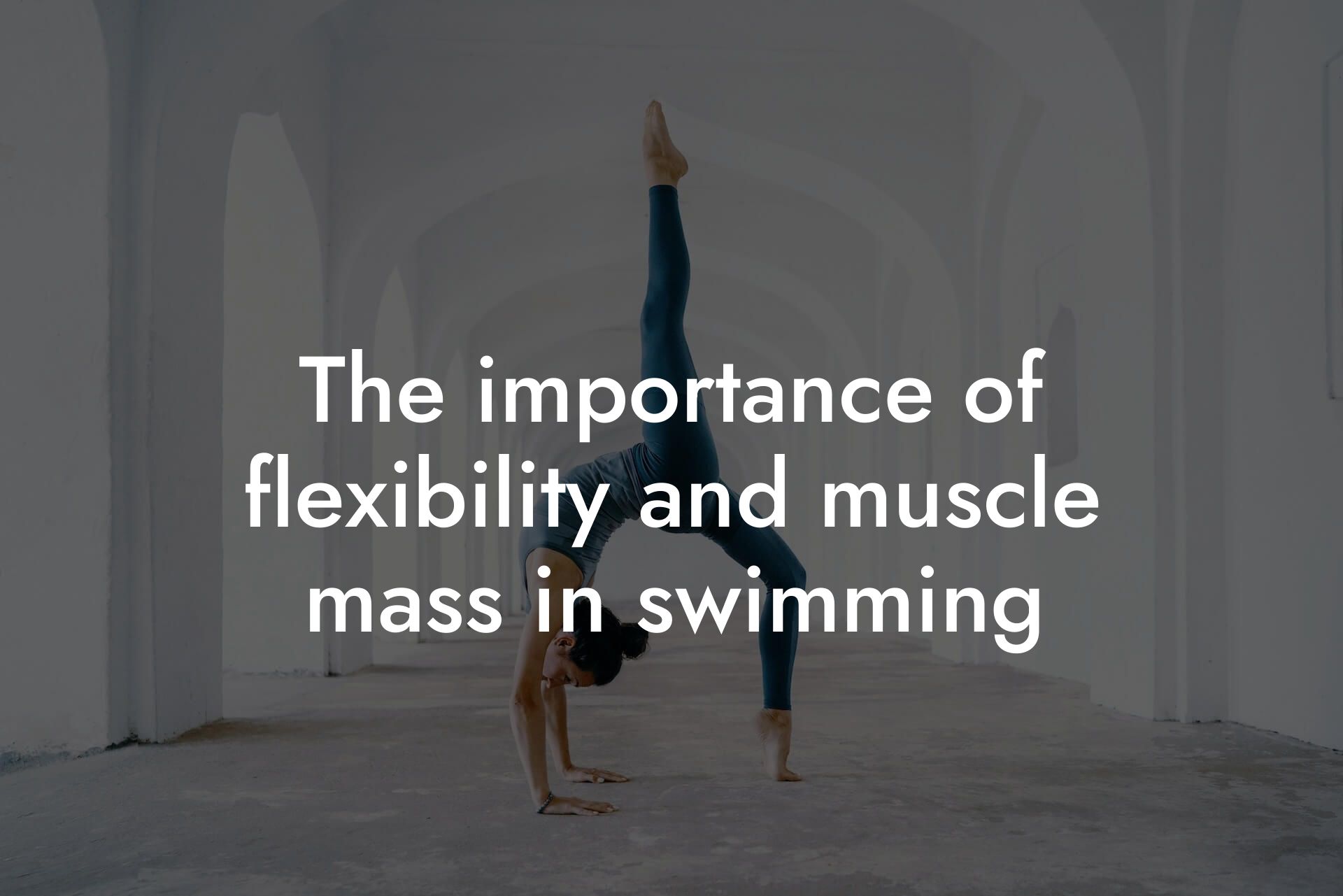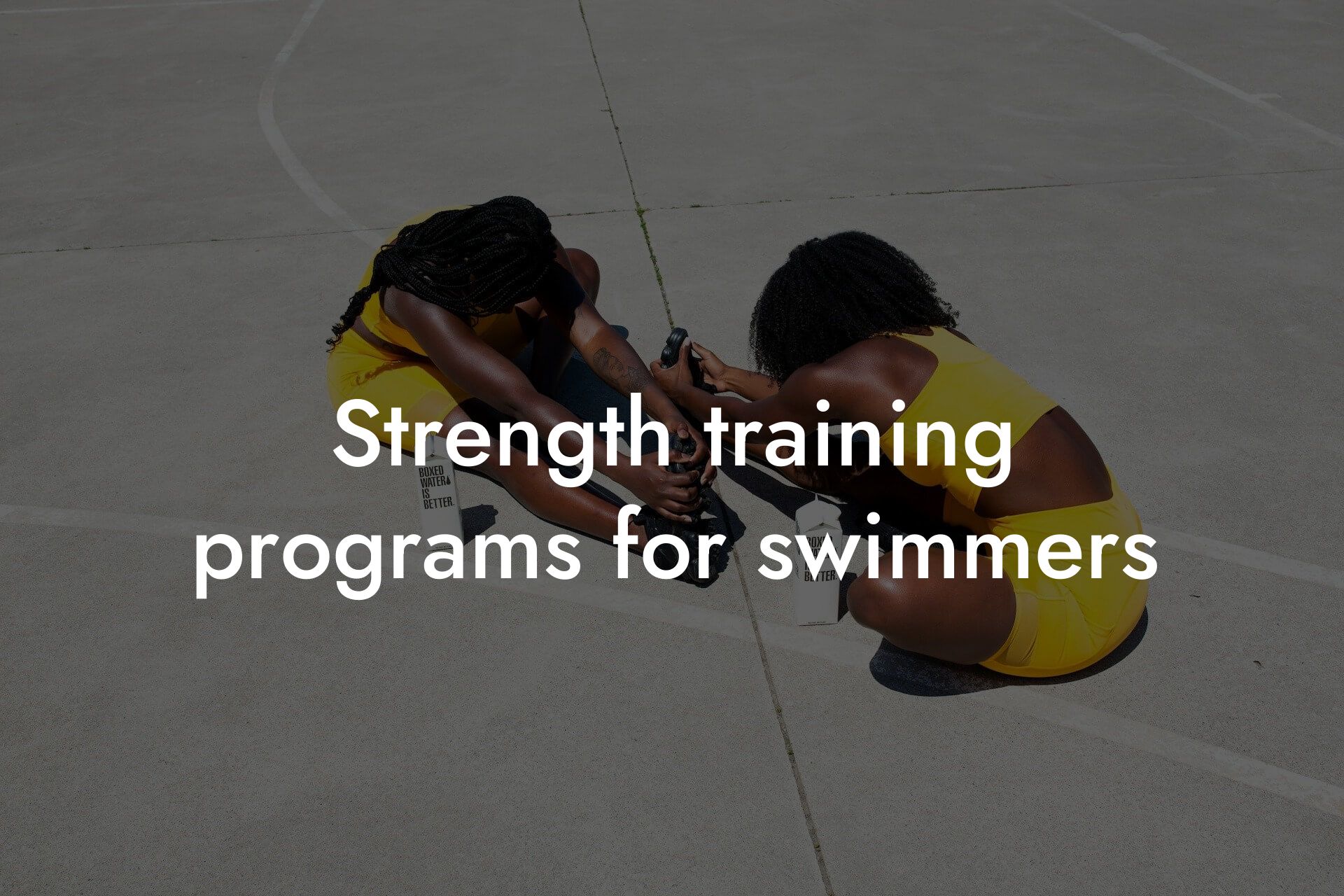As a high-earning professional, you understand the importance of maintaining a fit and healthy physique. For swimmers, having a low body fat percentage is crucial for achieving better buoyancy and speed in the water. In this article, we will explore the benefits of reducing body fat for swimmers, how to measure body fat, and provide a comprehensive guide on how to achieve a leaner physique for improved swimming performance.
Table of Contents
The Importance of Body Fat for Swimmers
Body fat plays a critical role in swimming performance. Excess body fat can increase drag, reduce buoyancy, and decrease speed. On the other hand, having a low body fat percentage can improve swimming efficiency, reduce energy expenditure, and enhance overall performance. Swimmers with a lower body fat percentage tend to have a more streamlined body shape, which reduces water resistance and allows them to move faster and more efficiently through the water.
How to Measure Body Fat
Measuring body fat is crucial for swimmers who want to optimize their physique for better performance. There are several methods to measure body fat, including skinfold measurements, bioelectrical impedance analysis (BIA), and dual-energy X-ray absorptiometry (DEXA). DEXA scans are considered the most accurate method, as they provide a detailed breakdown of body composition, including bone density, lean mass, and body fat percentage. At Tano Performance Group, we use DEXA scans to provide our clients with a comprehensive body assessment.
Benefits of Reducing Body Fat for Swimmers
Reducing body fat can have numerous benefits for swimmers, including:
- Improved buoyancy: A leaner physique allows swimmers to maintain a more horizontal body position, reducing drag and increasing speed.
- Increased speed: By reducing body fat, swimmers can move faster and more efficiently through the water, resulting in improved performance.
- Enhanced endurance: Swimmers with a lower body fat percentage tend to have more efficient energy expenditure, allowing them to swim for longer periods without fatigue.
- Better overall health: Reducing body fat can also improve overall health, reducing the risk of chronic diseases such as heart disease, diabetes, and certain types of cancer.
Creating a Calorie Deficit
To reduce body fat, swimmers need to create a calorie deficit, meaning they need to consume fewer calories than they burn. This can be achieved through a combination of diet and exercise. By reducing daily caloric intake and increasing energy expenditure through swimming and other forms of exercise, swimmers can create a calorie deficit and start losing body fat.
Nutrition for Swimmers
A well-balanced diet is essential for swimmers who want to reduce body fat. Focus on whole, nutrient-dense foods such as lean proteins, complex carbohydrates, and healthy fats. Avoid processed and high-calorie foods that can hinder weight loss efforts. Swimmers should also ensure they are getting enough protein to support muscle growth and repair.
Resistance Training for Swimmers
Resistance training is an essential component of a swimmer's training program. By building lean muscle mass, swimmers can increase their metabolism, reducing body fat and improving overall performance. Focus on exercises that target multiple muscle groups at once, such as squats, lunges, and deadlifts.
Cardiovascular Exercise for Swimmers
In addition to resistance training, swimmers should also incorporate cardiovascular exercise into their training program. This can include swimming, cycling, or running, and should be done at a moderate to high intensity to maximize calorie burn and fat loss.
Sample Workout Plan for Swimmers
Here is a sample workout plan for swimmers who want to reduce body fat:
- Monday: Resistance training (focus on lower body)
- Tuesday: Cardiovascular exercise (30-45 minutes, moderate to high intensity)
- Wednesday: Rest day
- Thursday: Resistance training (focus on upper body)
- Friday: Cardiovascular exercise (30-45 minutes, moderate to high intensity)
- Saturday: Rest day
- Sunday: Long swim (60-90 minutes, low to moderate intensity)
Reducing body fat is essential for swimmers who want to improve their buoyancy and speed in the water. By creating a calorie deficit, focusing on nutrition, incorporating resistance training and cardiovascular exercise, and getting regular body assessments using DEXA scans, swimmers can achieve a leaner physique and take their performance to the next level. At Tano Performance Group, we are dedicated to helping high-earning professionals like you achieve their fitness goals and improve their overall health and wellbeing.
Frequently Asked Questions
What is the ideal body fat percentage for swimmers?
For swimmers, the ideal body fat percentage varies depending on the individual's goals and swimming style. Generally, a body fat percentage between 10-15% for men and 15-20% for women is considered optimal for buoyancy and speed in the water. However, it's essential to note that a lower body fat percentage doesn't always translate to better swimming performance. A balanced diet and regular exercise are more critical factors in achieving success in the pool.
How does body fat affect swimming performance?
Excess body fat can negatively impact swimming performance by increasing drag, reducing buoyancy, and making it more challenging to move through the water. Additionally, carrying excess fat can lead to fatigue, decreased endurance, and a higher risk of injury. On the other hand, having a leaner physique can improve swimming efficiency, speed, and overall performance.
What are the benefits of reducing body fat for swimming?
Reducing body fat can bring numerous benefits for swimmers, including improved buoyancy, increased speed, enhanced endurance, and better overall performance. It can also reduce the risk of injury, improve body composition, and boost confidence in the water.
How can I measure my body fat percentage?
There are several ways to measure body fat percentage, including skinfold measurements, bioelectrical impedance analysis (BIA), dual-energy X-ray absorptiometry (DXA), and hydrostatic weighing. Consult with a healthcare professional or registered dietitian to determine the best method for you.
What is the best way to reduce body fat for swimming?
A combination of a balanced diet, regular exercise, and proper nutrition is the most effective way to reduce body fat for swimming. Focus on consuming whole, nutrient-dense foods, staying hydrated, and incorporating strength training and cardio exercises into your workout routine.
How long does it take to notice improvements in swimming performance after reducing body fat?
The time it takes to notice improvements in swimming performance after reducing body fat varies depending on individual factors, such as starting body fat percentage, diet, exercise routine, and overall health. However, with consistent effort and a well-structured plan, many swimmers start to notice improvements within 6-12 weeks.
Can I reduce body fat too quickly?
Yes, it's possible to reduce body fat too quickly, which can be detrimental to overall health and swimming performance. Crash diets and extreme calorie restriction can lead to muscle loss, fatigue, and decreased endurance. Aim for a sustainable rate of weight loss of 1-2 pounds per week.
How does nutrition play a role in reducing body fat for swimming?
Nutrition plays a critical role in reducing body fat for swimming. Focus on consuming a balanced diet rich in whole, nutrient-dense foods, including lean proteins, complex carbohydrates, and healthy fats. Avoid processed and high-calorie foods, and stay hydrated by drinking plenty of water.
What are some healthy snacks for swimmers?
Healthy snack options for swimmers include fruits, nuts, energy bars, and trail mix. Look for snacks that are high in protein, complex carbohydrates, and healthy fats to provide sustained energy and support muscle recovery.
How can I stay motivated to reduce body fat for swimming?
Staying motivated to reduce body fat for swimming requires setting realistic goals, tracking progress, and celebrating small victories along the way. Find a workout buddy or join a swimming community to provide support and accountability, and reward yourself for reaching milestones.
Can I reduce body fat without sacrificing muscle mass?
Yes, it's possible to reduce body fat without sacrificing muscle mass. Focus on incorporating strength training exercises into your workout routine, and consume a balanced diet rich in protein to support muscle growth and maintenance.
How does strength training benefit swimming performance?
Strength training can improve swimming performance by increasing power, speed, and endurance. It can also enhance body composition, reduce the risk of injury, and improve overall athleticism.
What are some effective strength training exercises for swimmers?
Effective strength training exercises for swimmers include squats, lunges, deadlifts, bench press, rows, and leg press. Focus on exercises that target multiple muscle groups at once, and incorporate plyometric and explosive movements to improve power and speed.
How often should I strength train to improve swimming performance?
Aim to strength train 2-3 times per week, with at least one day of rest in between. This allows for adequate recovery time and can help prevent overtraining and injury.
Can I reduce body fat by only doing cardio exercises?
While cardio exercises can help burn calories and reduce body fat, relying solely on cardio can lead to muscle loss and decreased endurance. Incorporate strength training exercises into your workout routine to build muscle and support overall fitness.
How does swimming itself help with reducing body fat?
Swimming is an effective way to burn calories and reduce body fat due to its high-intensity, low-impact nature. It can also improve cardiovascular health, increase muscle endurance, and boost metabolism.
What are some common mistakes swimmers make when trying to reduce body fat?
Common mistakes swimmers make when trying to reduce body fat include crash dieting, overtraining, and neglecting strength training. It's essential to focus on sustainable, long-term changes to diet and exercise routine rather than quick fixes.
How can I track my progress and stay accountable?
Track your progress by taking body fat measurements, monitoring your diet and exercise routine, and setting realistic goals. Share your goals with a friend or workout buddy to provide accountability and support.
What role does rest and recovery play in reducing body fat for swimming?
Rest and recovery play a critical role in reducing body fat for swimming. Adequate rest allows your body to repair and rebuild muscle tissue, while proper recovery techniques, such as stretching and foam rolling, can reduce muscle soreness and improve overall performance.
Can I reduce body fat and improve swimming performance at the same time?
Yes, it's possible to reduce body fat and improve swimming performance simultaneously. Focus on making sustainable changes to your diet and exercise routine, and celebrate small victories along the way to stay motivated and track progress.
What are some additional resources for swimmers looking to reduce body fat?
Additional resources for swimmers looking to reduce body fat include consulting with a registered dietitian or sports nutritionist, working with a personal trainer, and seeking guidance from online fitness communities and swimming forums.
How can I maintain my new physique after reducing body fat?
Maintaining your new physique after reducing body fat requires a long-term commitment to healthy habits, including a balanced diet, regular exercise, and proper nutrition. Continue to track progress, set new goals, and celebrate small victories to stay motivated and accountable.
Here are some related articles you might love...
- Off-season conditioning for professional swimmers
- The importance of flexibility and muscle mass in swimming
- Strength training programs for swimmers
- Using DEXA scans to optimize swimmer performance
- Bone density and its impact on injury prevention in swimming
- Recovery techniques for swimmers after intense training
- Balancing strength and endurance in swimming
- Nutrition strategies for swimmers to maintain energy levels
- The role of body composition in swimming speed and endurance
Zak Faulkner
Zak Faulkner is a leading authority in the realm of physical health and body composition analysis, with over 15 years of experience helping professionals optimise their fitness and well-being. As one the experts behind Tano Performance Group, Zak has dedicated his career to providing in-depth, science-backed insights that empower clients to elevate their physical performance and overall health.
With extensive knowledge of DEXA technology, Zak specializes in delivering comprehensive body assessments that offer precise data on body fat, muscle mass, bone density, and overall physique. His expertise enables individuals to make informed decisions and achieve their fitness goals with accuracy and confidence. Zak’s approach is rooted in a deep understanding of human physiology, combined with a passion for helping clients unlock their full potential through personalised strategies.
Over the years, Zak has earned a reputation for his commitment to excellence, precision, and client-focused service. His guidance is trusted by top professionals who demand the best when it comes to their health. Whether advising on fitness programs, nutritional strategies, or long-term wellness plans, Zak Faulkner’s insights are a valuable resource for anyone serious about taking their health and fitness to the next level.
At Tano Performance Group, Zak continues to lead our Content Team revolutionising how professionals approach their physical health, offering unparalleled expertise that drives real results.




